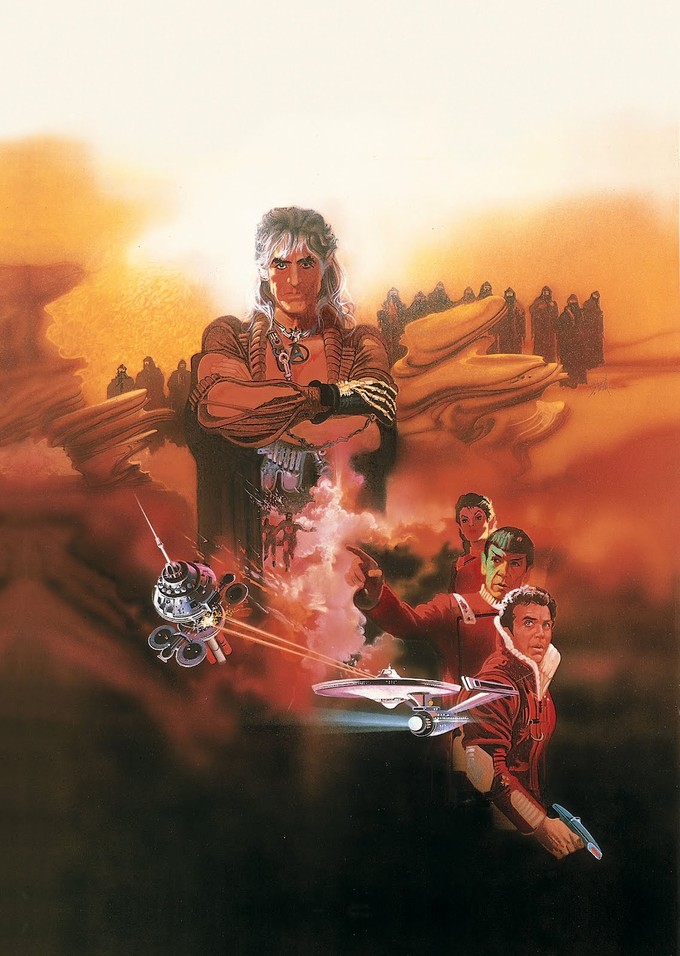
For those who don’t know me, I’ve been writing occasionally for AICN since 1996. But I’m also a professional astronomer at Las Cumbres Observatory Global Telescope Network and a professor at the University of California, Santa Barbara. One of the things I write about often (or give lectures about) is the science in movies. I don’t do this to nitpick. On the contrary, I think it allows us to gain new insight into all of the thought put into a film, and appreciate it in new ways. And it is a chance to teach a little science, or even just the wonder of science, using a starting point that we’re all familiar with. If you really need to bend the scientific rules to tell a better story, that’s ok. But don’t do it just because you are too lazy to understand the subject matter you are writing about. So this is part fun, part education, part keeping writers honest, and part just to give us something to argue about.
Leonard Nimoy’s death hit me pretty hard. As I said in his obituary, in a time when there wasn’t an internet to help you find your tribe, and not even cable to show a wide range of interests, Spock was one of the first and, for a time, only icons for nerds and geeks. People who got regularly bullied in school could look to Spock and say, hey, this guy is logical and smart, doesn’t even understand people all that well socially, but he’s cool. More than that, Spock was a badass. And it wasn’t just the writing. Trek dialog can look pretty silly on the page, and sound that way coming out of the mouths of lesser talents. But Nimoy sold it like it was Shakespeare. I agree with Philip K. Dick, “It’s the tone of voice, the supernatural reasonability; this is not a man like us; this is a God. God talks this way; every one of us senses it instinctively.”
How many engineers, astronauts, and scientists would have been bullied out of their passions without him as a role model? Our nation, which is driven by science, technology, and innovation, owes a great debt of gratitude to Mr. Nimoy and his portrayal of Mr. Spock (and indeed the entire cast of STAR TREK). Here’s some firsthand evidence, after NASA built a real-world Enterprise.
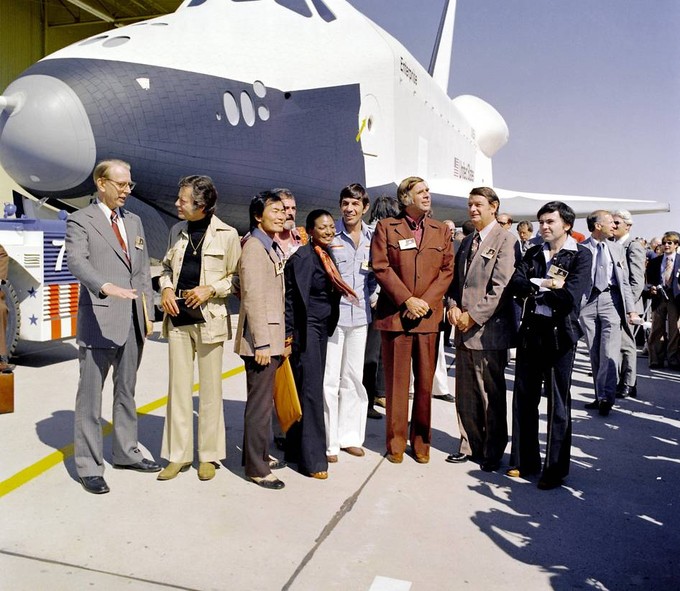
And oh my god, WRATH OF KHAN. It is one of my top 10 films of all time. I watch it at least once a year. As I’ve grown older and started to mentor young people, its resonance has only grown. It is about experience vs. youth. But it isn’t one-dimensional. The young people have all the enthusiasm and vigor. The older crowd has the wisdom, and at times, the weariness. In most movies you either have young people as the protagonists and the older people as the foil or vice versa. But here they each learn from the other.
To a greater extent than any other STAR TREK story, TWOK is about the human condition first and foremost, and STAR TREK only secondarily. It has themes of obsession, friendship, aging, death, and spiritual rebirth. It could have been told in almost any time or place. Except that it is also perfect and quintessential TREK. It calls on the events of the series and expands on them. And because of that backstory, I’d go so far to say that Spock’s death is one of the most resonant and hard-hitting death scenes in all of cinema history. This was a friendship we’d seen grow over more than 80 hours of storytelling and nearly two decades of real time. And Spock was pure, perfect, and selfless. This is about having your best friend ripped away from you. I’m old enough for this to have happened to me. To get through it, I put on WRATH OF KHAN.
And of course I put it on when Leonard Nimoy died. He’s such an incredible actor that in the middle I was so wrapped up in the story, even though I’d seen it dozens of times, that for a while I forgot he had died. But then when it came to Spock’s actual death it hit me harder than ever. This was no longer a metaphor, and he wasn’t coming back.
So to make a short story long, I have nothing but love for WRATH OF KHAN. But that isn’t going to make me pull any punches on the science. Enough of my emo bullshit. Spock would not be pleased. Let’s do some physics!
THIS IS CETI ALPHA V!!!
Long about the time Kirk was spreading his own “space seed” with Drusilla the slave girl, Khan and his genetically engineered biker gang were getting screwed by the universe. I’ll let Khan explain in his own words — you’ll just have to imagine it in the mellifluous cadence of Ricardo Montalban, “Ceti Alpha VI, exploded six months after we were left here. The shock shifted the orbit of this planet and everything was laid waste.”
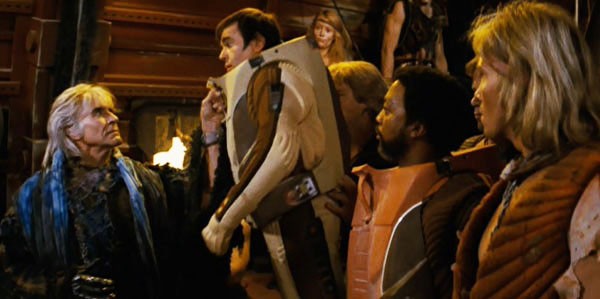
Now, I understand Chekov wasn’t exactly in a position to sass Khan right at that moment, but he should have called bullshit on Khan’s weak-ass grasp of astrophysics. For a start, planets don’t just explode. Second, how did he know it exploded, if he was trapped on the surface of a planet with no advanced equipment? If Mars exploded, we might see it get brighter for a bit, then eventually fade away, but without telescopes we’d have to guess what happened. Third, a shock is a specific kind of density wave moving through a medium. It needs something to propagate in — you can have a shock ripping through a star during a supernova, but it won’t just fly through empty space (supernova ejecta will but that’s not a shock). And fourth, even if he colloquially meant that a bunch of debris hit his planet and shifted it enough to change the climate, that is highly unlikely. Roughly speaking, the exploded planet debris would drop in density like the square of the distance from the explosion and other planets are always very far away.
But hey, we only have the word of a half-cocked madman to go on here. There are some astrophysical phenomena that can explain the condition of Ceti Alpha V. Let’s see if we can figure out what happened.
I said earlier that planets don’t just explode. I meant that after the planets are done forming, assuming nothing else interacts with them, they don’t explode. But the Earth has actually exploded in the past! Kind of. At least, that’s the leading theory for how the Moon was formed. Early in the life of the Solar System, the idea is that a Mars-sized body smashed into the proto-Earth. This created a giant cloud of debris, and out of that the Moon formed. But in those wild years things were pretty chaotic.
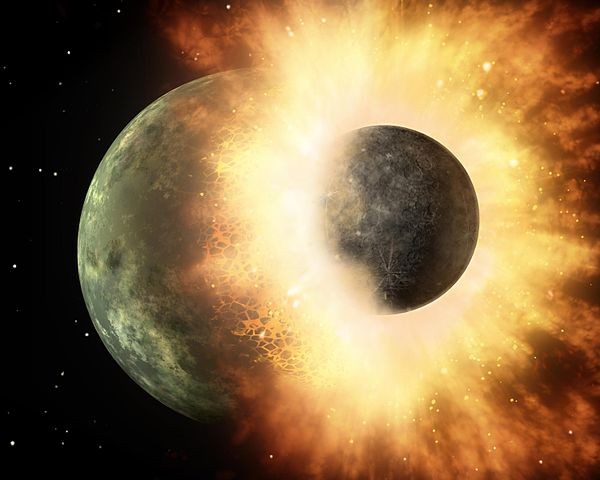
Presumably, Kirk would not have left Khan on a planet system undergoing such heavy bombardment. For one, it could have still been molten. Besides, we know that Ceti Alpha V had been stable long enough for life to evolve. We actually even know what star this is, and it is an old star — a red giant! Astronomers name stars after the constellation they are in. Cetus is a sea monster, sometimes called a whale. The stars in each constellation are named after the Greek alphabet in decreasing order of brightness. So Alpha Ceti is the brightest star in Cetus, also known as Menkar (though due to a technically it is actually the second brightest). I don’t know why STAR TREK sometimes insists on flipping the order and saying it as Ceti Alpha, except that maybe it sounds cooler.
But ok, even if planets don’t just naturally explode, this is the STAR TREK universe we’re talking about here. People have been known to just blow them up. Maybe somebody just didn’t like the look of Ceti Alpha VI. Or maybe they had to make room for an intergalactic freeway.
There is another possibility though. Strangely enough, planets don’t always stay in the same place. The biggest surprise of all of the thousands of planets humans have found around other stars (which, unless you are in high school, has happened in your lifetime), is that we’ve found tons of Jupiter-sized planets extraordinarily close to their stars. They are often well inside the orbit of Mercury — so close that their “year” is only a few days, as opposed to the 12 years it takes Jupiter to orbit the Sun. Since such intense heat makes light gasses like hydrogen evaporate, these giant planets could not have formed there. They must have formed farther out in their solar system and migrated inward.
In fact, in the leading model of the history of our solar system, the planets weren’t always in the same place they are today. This model, called the Nice model(after the city in France), posits that initially Saturn, Uranus, Neptune, and the belt of comets outside of it, called the Kuiper Belt, were all much closer in. Eventually, due to interactions between comets and the outer planets, Saturn, Uranus, and Neptune started to drift outward. Then, when Jupiter and Saturn got into a certain configuration, their orbits became more elliptical and all hell broke loose. Saturn got driven outwards, and then started having gravitational encounters with Neptune and Uranus. They got thrown farther outward, and started scattering comets everywhere. In fact, Uranus and Neptune might even have swapped orbits, and there might have been a fifth gas giant planet that was flung out of the Solar System.
This may sound nuts, but simulations show that this is what happens if you start the planets off with a more compact configuration. And it explains many other features of the Solar System that we don’t otherwise know how to explain. For example, there was a period of “late heavy bombardment” where comets were flung everywhere, long after the solar system had settled down. That’s what made most of the craters on the moon. It also explains why some planets are in “resonant” orbits, the Trojan satellites of Jupiter, why the asteroid Ceres seems out of place, and why the Kuiper belt has such a low density. There are variations on the Nice model, like the Nice 2 model (which I think we should call THE WRATH OF NICE), but you get the idea.
So maybe something similar happened in the Ceti Alpha system, causing the planets in that system to shift their orbits, and Khan just made up all that hoo-ha about a planet exploding. Khan was in effect cast out of paradise by Kirk when he was banished. I like that his planet then literally followed suit.
I EEL PAIN
Mind control has happened plenty in the Star Trek universe, but usually it is done with some advanced technology or superpower (like the magic wand in the TOS episode Cat’s Paw). That’s so cinematically uninteresting. It was a brilliant move to have it accomplished with Ceti eels — creatures that burrow into your ears and wrap themselves around your cerebral cortex. That’s easily one of the most horrific things to happen in a Trek episode or movie, and it fills me with Cronenbergian delight.
The crazy thing is, in nature, brain hijacking happens ALL THE TIME. Take toxoplasma gondii. When rats are infected with this protozoan, they stop fearing cat urine and become bolder, even becoming attracted to it. This makes them get eaten more, allowing the parasite to be transferred to the cat, the only place where it can sexually reproduce. In fact, a large fraction of humans are infected. Then there’s also the worm spinochordodes tellinii. Their larvae infect grasshoppers. When they mature, they make the grasshoppers jump to their death in water, where the parasite can escape and breed.
Of course for a species to become a parasite, it must evolve along with its host. That doesn’t seem likely on Ceti Alpha V, where there were apparently no humans until Kirk put them there. But if there is one thing we know about the Star Trek universe it is that almost all life is humanoid, and they are everywhere. Maybe Ceti Alpha V had humanoids (or other creatures that were close enough) in the past. In my book, eel-based mind control is so infinitely cooler than creatures with magic wands that I’m willing to grant a giant artistic license.
CLOUD CUKOO LAND
The big, climactic battle in WRATH OF KHAN happens in the Mutara nebula. Kirk knows that the nebula will interfere with sensors and shields, at least leveling the playing field, and maybe giving him the advantage. But do the nebulae we see in STAR TREK correspond to anything we know about astrophysical nebulae?
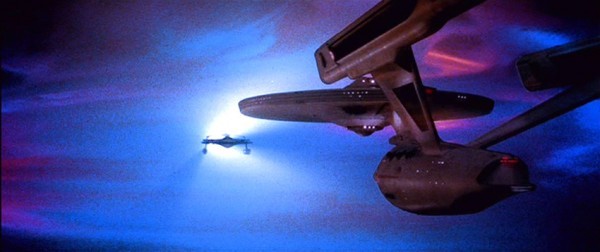
Nebulae in space are unbelievably rarefied by Earth standards. In fact, in most of the pretty nebulae you see pictures of have between 100 and 10,000 particles per cubic centimeter. Compare that to the density in the atmosphere on Earth at sea level — about 1019 / cc! Nebulae actually have a density somewhere between a pretty good vacuum and the best vacuum we can make on Earth.
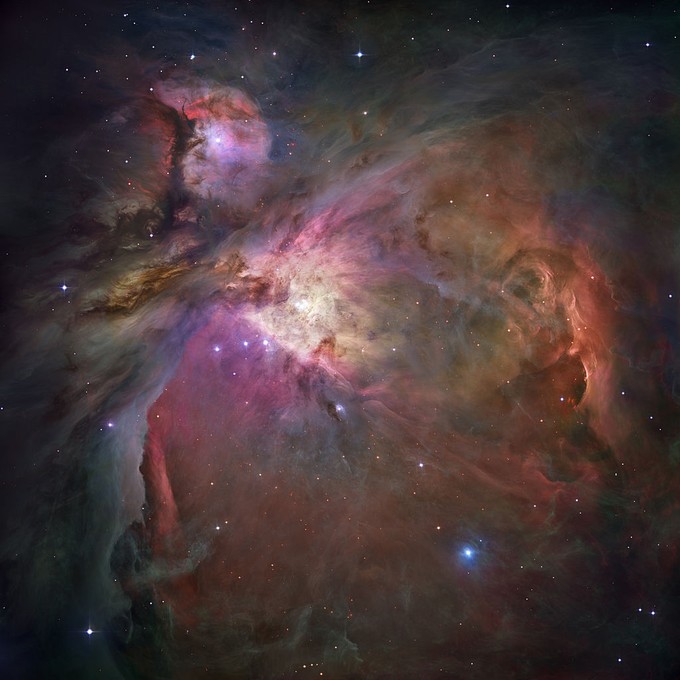
Why then can we see nebulae at all? The main reason is because they are huge — many lightyears in diameter. When you add up all that volume, it turns out there is a lot of stuff in there. But if you were deep inside the nebula, you’d have no problem seeing many thousands of kilometers unobstructed — you’d just see this diffuse glow all around you in the distance. It is kind of like being in a fog that isn’t very dense — you can see people next to you, but you might not be able to see the horizon. Given the density of a cloud and its composition, you could actually calculate exactly how far you could see, but that’s graduate level stuff — a bit too involved for a popular article.
So the depiction in WRATH isn’t entirely accurate. Since they just entered the nebula, you should be able to see empty space in one direction, and a diffuse glow in the other. And the ships were so close that you should be able to easily see the other ship. Even if the sensors were screwed up — just put spotters on the windows! But hey, they had to take some artistic license to show depth and to make things more visually interesting. So I actually have no problem with how the final battle looked visually.
Next question: could the conditions inside a nebula give the sensors and shields on the Enterprise trouble?
Your standard, run-of-the-mill nebula is called an HII (pronounced H-two) region. That’s astronomer-lingo for saying that it is ionized — the intense radiation from nearby stars has stripped some of the electrons from their atoms. These clouds glow because some electrons are still bound to atoms (sometimes only fleetingly), and they change energy levels, emitting a photon in the process. This is the “quantum” in quantum mechanics — electrons in atoms can’t have just any energy — they can only take on certain states.
But when a gas cloud gets really dense, we call it a molecular cloud. That’s because these clouds are so packed that the atoms can form molecules. The gas is densest in the cores of these clouds, where it can reach a million or perhaps even a billion particles per cubic centimeter. Molecular clouds don’t generally emit visible light, they absorb it. As a result, they look like dark patches in the sky. Still, we have to remember that they are more than a billion times less dense than the Earth’s atmosphere.
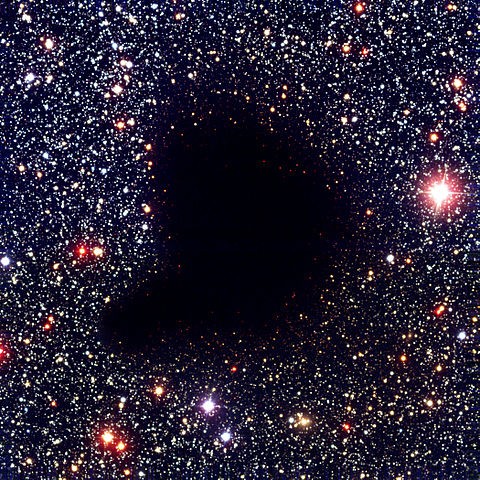
Molecular cloud cores are so different than interstellar space, I can image that they built starships for general cruising and not to go into really dense areas. After all, you are running into stuff at really high speeds in a spaceship. Even impulse power is a quarter the speed of light.
The Enterprise is running into particles all the time as it travels through space. Let’s assume that it is designed to be able to withstand things at its top cruising speed, which is somewhere around 1000 times the speed of light (it can go faster than that, but not for long). On some calibrations of the warp scale, this is about warp 8. We can calculate, for normal interstellar particle densities, how much stuff the Enterprise will run into at this speed, and compare it to how much the Enterprise will run into in a much denser nebula moving at a slower speed. Since it was too much to code into html, I just wrote it on paper.
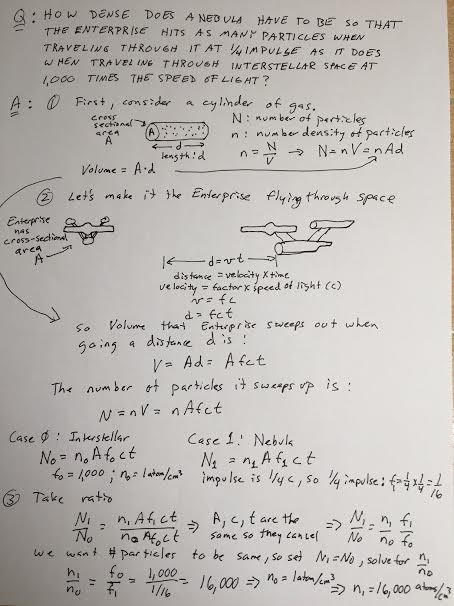
Basically, you can determine the maximum number of particles that the Enterprise would want to subject itself to in a nebula is just the ratio of the speeds! So if a nebula has more than 16,000 particles per cubic centimeter, you’d run into more stuff there moving at 1/4 impulse power than you would cruising interstellar space at 1000 times the speed of light. The exact numbers aren’t that important, we just want to see if we’re in the right ballpark. And now that you know how to do the calculation, you can plug in your own numbers.
This is pretty profound! Remember that 16,000 particles per cubic centimeter is in the ballpark of an HII region, and molecular clouds can be hundreds or thousands of times denser. So yes, it is conceivable that a nebula could give the Enterprise some kind of trouble.
There’s one big problem with this. In the TOS episode Tomorrow is Yesterday, the Enterprise flew into the Earth’s atmosphere. Let’s just pretend that never happened. At least it was going very, very slow compared to the speeds we just considered. And don’t even get me started on the Enterprise going under water.
One other thing about the Mutara nebula: it looks ionized. So the particles there are charged. In fact, they even show lightning in the nebula! We’ve never seen this in real life, but lightning on Earth (and other planets) happens when you get too many positive and negative charges separated. Who knows, maybe this could happen in a nebula, especially one with spaceships disturbing it.
Maybe it is the charged nature of the particles that is interfering with the shields or sensors. It shouldn’t be *that* hard to deal with though, just use a magnetic field. Charged particles will spiral around it. In fact we’ve been sending spaceships through charged particles for decades. That’s what the Van Allen Belts are: charged particles trapped in the Earth’s magnetic field.
So my take on the whole nebula fight is that some artistic liberties were taken, but that’s fine. It is in the ballpark of plausibility, and it makes for an incredible, suspenseful climax. Plus it adds many layers of thematic resonance. It makes the battle into a submarine fight — appropriate for a film with so many allusions to Moby Dick. It is one of the few TOS outings that doesn’t devolve into a fistfight. (it has always bothered me that in the future, with all this technology, everything always ends in a fistfight. But here Kirk and Khan never actually meet face to face!) And nebulae are places where stars are either born or die — highly appropriate for a film about death and (spiritual) rebirth. I don’t think I’ve have done it any other way.
AND CAROL MARCUS SAID, LET THERE BE LIGHT…
The place where I have the biggest problem in TWOK is the creation of the Genesis planet. The Genesis (plot) device doesn’t bother me so much. Yes, it is insane — who could imagine a bomb that both transmutes elements (e.g. creating water), creates life itself, and then makes that life evolve at a super-accelerated rate? But being right at the intersection of life and death, being simultaneously the creator and destroyer, it is just too perfect not to have. I’d have had it introduce single-celled life (those could just be a separate payload) and stopped there. Maybe that’s even close to what Nicholas Meyer originally intended. He initially didn’t have the final shot of the coffin on the planet, surrounded by trees. In fact, he was so against that scene, he refused to shoot it — they got an AD to do it. But test audiences wanted something a little less of a downer at the end, and the studio wanted a loophole to be able to bring Spock back. And yes, they took the superpowers of the Genesis planet way too far in STAR TREK III, but this article is strictly about TWOK.
The real problem I have is that the Genesis device creates a planet out of nothingness, which breaks the rules set up earlier in the film. Why were they hunting for a lifeless planet to terraform if they could just create one? Indeed in the Genesis video they show it terraforming a preexisting planet and even make the point that the final planet is of equal mass to the original — Genesis is not creating matter.
Indeed, there would be no way to pack enough energy into Genesis to be able to create mass out of nothing. We can easily calculate the required energy from E=mc2. We know the mass was roughly equal to that of Earth, because it has Earthlike gravity. To make one earth mass would require 1041 Joules. That’s as much energy as the whole sun puts out in 10 million years. If the Federation had the capacity to create, store, and manipulate energies like that, they could make phasers so powerful they could vaporize anything. Each starship would be a Death Star.
There is one way out, which I must confess, I found by reading Memory Alpha. The Genesis device could have sucked up the matter from the Mutara nebula to create the planet. Of course, that still seems pretty iffy to me — it would take a long time to draw together that much mass, and you’d still have to create heavier elements out of hydrogen. And again, why look for a planet if the device could just do that. And I guess it was just coincidence that Khan was the right distance from the star so that the planet would be a nice temperature. And it had just the right amount of angular momentum to keep it in orbit.
I’d have simply had the final battle near a planet. In fact, they were already near the planet where the Genesis underground testing was done. Khan could still have detonated Genesis, and the wave could have enveloped the planet.
One other minor nitpick is that they show diffraction spikes on the parent star to the Genesis planet. We see those in telescope images because the light is diffracting around the supports holding the secondary mirror in place. You wouldn’t see them if you just looked at a star in space.
LIGHT ECHOES
As the Enterprise speeds away, there is one very cool effect that makes me giddy every time I see it. A series of expanding circles are lit up by the explosion that creates Genesis. These are light echoes! They happen like sound echoes, where sound goes away from you, bounces off something, and comes back to you with a delay. In this case, after an explosion, some of the light comes toward you, but some goes another direction, bounces off a gas cloud, and then comes back at you with a delay.
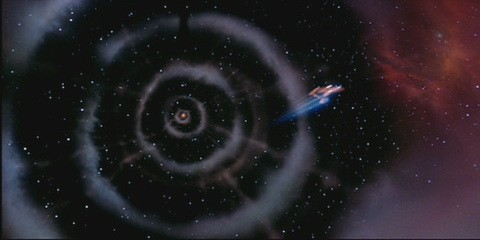
Here’s a light echo from the star V838 Monocerotis. It looks like gas flying away from the star, but in actuality, there was some kind of explosive outburst, and this lit up progressively farther shells of gas surrounding the star as the light traveled outward.
Light echoes often show up as progressively expanding rings. That’s because light that takes the same path length (i.e. time) to get to you traces out an ellipsoid as you can see in the diagram below.
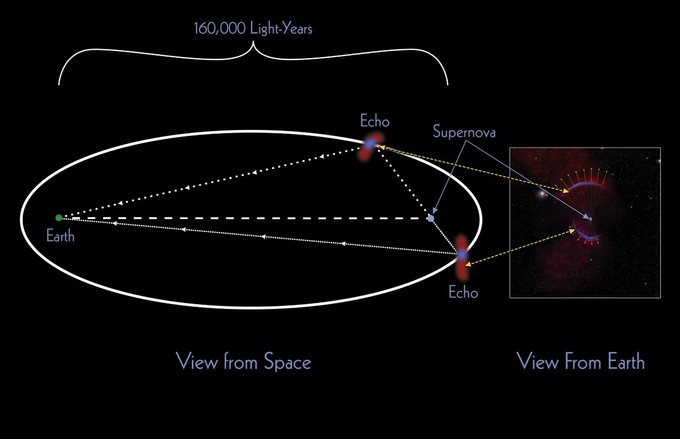
We use light echoes to do astounding feats of time travel in astronomy. For example, Eta Carinae became the second-brightest star star in the southern sky in the mid-1800s. But since this was before spectrographs and film, astronomers didn’t really know what caused this apparent outburst. Today we can see the after-effects using the Hubble Space Telescope — there are two huge lobes of gas flying away, the result of whatever happened in the 1800s.
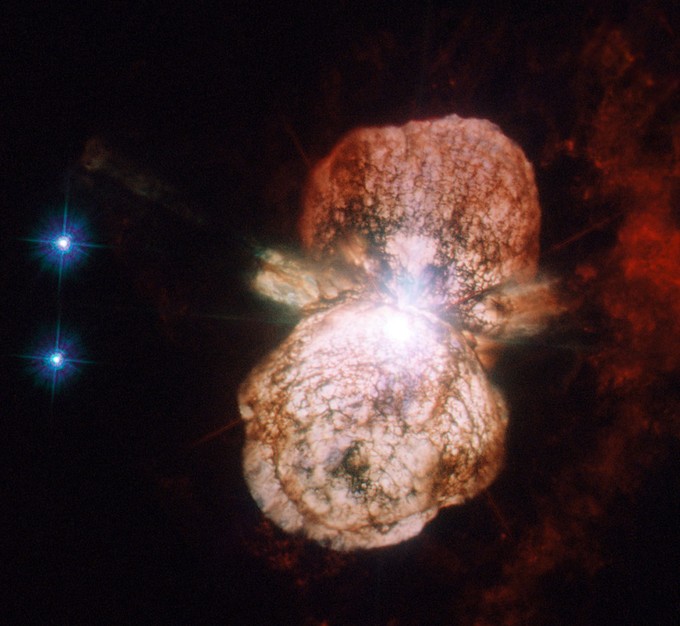
Still, the actual event remained a mystery. But a few years ago, a team led by my good friend Armin Rest discovered a light echo from Eta Car. Some of the light had gone another direction, had bounced off a gas cloud, and finally arrived at Earth about 170 years later. So we then used the light echo to reobserve the event from the mid-1800s and found that it was some kind of explosion! Since Eta Car’s “great eruption” persisted for about twenty years, we are now reobserving those years in real time. We’re actually able to see the event from several angles, all at slightly different times using light echoes.
Using this technique, astronomers have also re-observed supernovae from hundreds of years ago — supernovae originally seen by Johannes Kepler or Tycho Brahe, and determined all kinds of information (like what type of star exploded) that was never known before.
That’s a good way to end this piece, with some of my own research. I’ve been lucky enough to figure out some cool things about the way the universe works. And I owe part of that to Mr. Leonard Nimoy, who was an inspiration to me. Multiply that by millions and you start to see his impact. Some of you are probably reading this on your pocket communicators. It is conceivable that astronauts are reading it in space. We’re all going where no one has gone before. Fascinating.
- Copernicus aka Andy Howell. Email me or follow me on Twitter.
